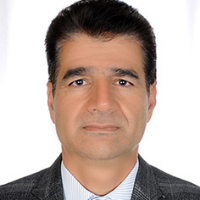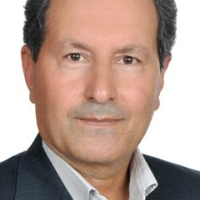Evaluation of germination indices and seedling growth in sesame ecotypes (Sesamum indicum L.) under salinity conditions
Author(s):
Fazeli Kakhkif. , A.Nezami , M.Parsa , M.Kafi
Abstract:
Germination and seedling growth is important for plants establishment under saline conditions. So choosing the plants that have rapid and uniform germination under saline conditions may help initial establishment and seedling growth. In order to assess the response of sesame ecotypes to salinity, a factorial experiment based on completely randomized design was conducted with three replications under laboratory conditions. The first factor was five sesame ecotypes (MSC3, MSC6, MSC7, MSC12 and MSC14) and the second factor consisted of 11 salinity levels (1, 3, 6, 9, 11.4, 14.5, 16.4, 19.6, 21.1, 23.1, and 25.1 dS.m-1) that was provided from water wells in the region with electrical conductivities of 2.5, 10 and 23 dS.m-1 and then treatments were achieved by diluting or concentrating these saline solutions. The results showed that germination was decreased by increasing salinity, so that there was very low germination in the salinity level of 23.1 dS.m-1 and no germination was observed in the salinity of 25.1 dS.m-1. Salinity had significant effects on components of final germination percentage (FGP), germination rate (GR), germination uniformity (GU), time to reach 50% germination (T50), germination energy (GE), seedling vigor index (SVI), length of shoot and root to shoot dry weight ratio (R / S). With increasing salinity levels, however, these components were not equally affected. In salinity of 3 dS.m-1, the indices related to seedling growth was higher than the control and other treatments, and FGP, GU, GE and SVI indices were 8, 5, 10 and 66% higher than the control treatment, respectively. The highest correlation of FGP was observed with GE (0.98**) and GR (0.83**), which indicates that sesame ecotypes seeds with high germination energy will have increased amount of FGP. In high salinity conditions (23.1 dS.m-1), the maximum and minimum amount of FGP, GR and GE were observed in MSC6 and MSC12 ecotypes, respectively. MSC6 and MSC7 compared with other ecotypes had a higher SVI index. It seems that MSC6 ecotype had a greater tolerance range than other ecotypes under conditions of this experiment.
Keywords:
Language:
Persian
Published:
Journal of environmental stresses in crop sciences, Volume:7 Issue: 2, 2015
Page:
217
magiran.com/p1374299
دانلود و مطالعه متن این مقاله با یکی از روشهای زیر امکان پذیر است:
اشتراک شخصی
با عضویت و پرداخت آنلاین حق اشتراک یکساله به مبلغ 1,390,000ريال میتوانید 70 عنوان مطلب دانلود کنید!
اشتراک سازمانی
به کتابخانه دانشگاه یا محل کار خود پیشنهاد کنید تا اشتراک سازمانی این پایگاه را برای دسترسی نامحدود همه کاربران به متن مطالب تهیه نمایند!
توجه!
- حق عضویت دریافتی صرف حمایت از نشریات عضو و نگهداری، تکمیل و توسعه مگیران میشود.
- پرداخت حق اشتراک و دانلود مقالات اجازه بازنشر آن در سایر رسانههای چاپی و دیجیتال را به کاربر نمیدهد.
In order to view content subscription is required
Personal subscription
Subscribe magiran.com for 70 € euros via PayPal and download 70 articles during a year.
Organization subscription
Please contact us to subscribe your university or library for unlimited access!



